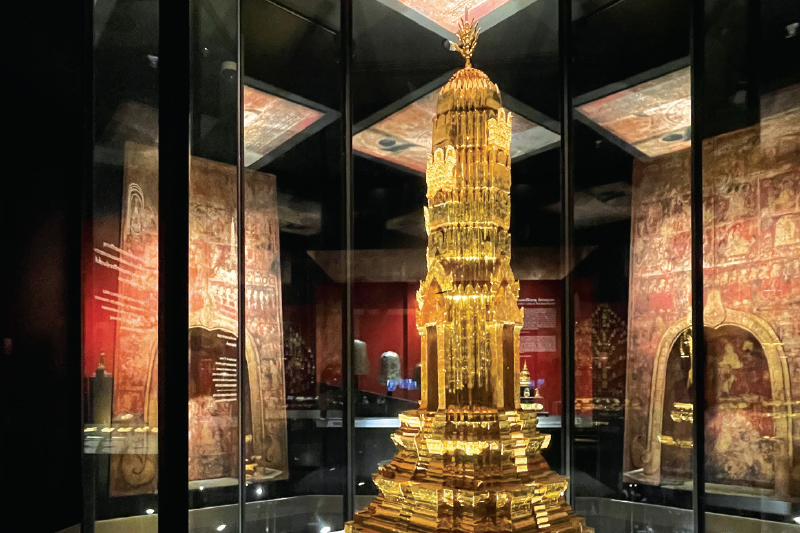
Ayutthaya Gold Rush
One day is all you need to see the unearthed treasures of Siam’s old capital
Words & Photos: P/K/A
In the 17th century, Siam’s old capital of Ayutthaya was renowned among European traders for its wealth and thriving international trade – particularly gold. The city’s palaces, temples and towering spires glittered with gold brought by merchants from Persia, Sumatra, Java, Malayu, and China, according to Simon de La Loubère, a French envoy to the Ayutthaya Kingdom in 1687 during the reign of King Narai.
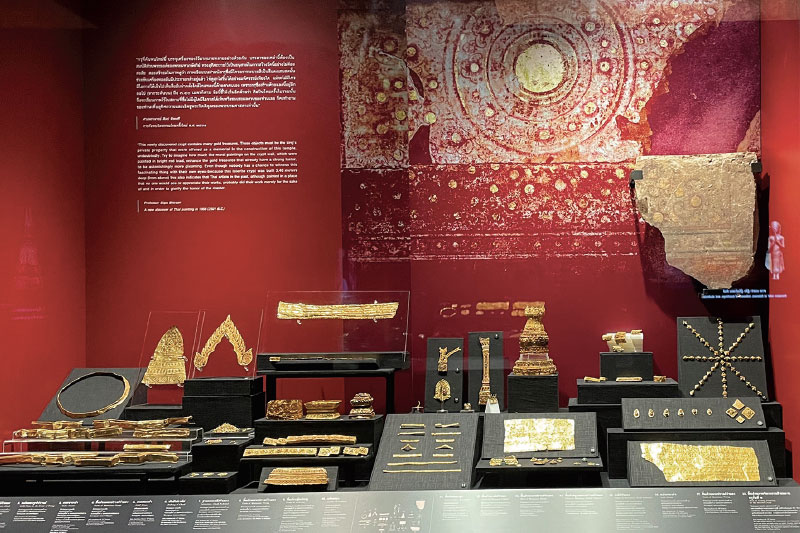
Ayutthaya goldsmiths were skilled in crafting paper-thin gold tablet inscriptions sent by Siamese kings to the rulers of other cities. The dazzling wealth of Ayutthaya was on display at the royal welcome banquet for French envoys, where the fruit came served in gold bowls.
The new Ayutthaya Gold Treasure Exhibition Building at the Chao Sam Phraya National Museum showcases a stunning collection of over 2,000 gold artifacts excavated from the old capital’s most sacred temples. They include paper-thin embossed gold plaques, miniature royal regalia, Buddha images, crowns, and headdresses. These priceless treasures were unearthed from the vaults of Wat Ratchaburana, Wat Maha That, Wat Phra Ram, Wat Phra Si Sanphet, and Sri Suriyothai Pagoda.
The main exhibition area displays gold artefacts excavated from the crypt of Wat Ratchaburana. Spectacular highlights are the Phra Sang Khan Chai Sri (Royal Sword of Victory) embellished with quartz and gemstone-like coloured glass, the Chula Mongkut (a coronet made of four strips of gold and decorated with coloured glass) and Phra Suwan Mala (a headdress made with gold thread). Also featured is a model of the three-storey crypt inside Wat Ratchaburana’s central prang where the treasures and Buddha relics were stored. Visitors can also view the sacred relics unearthed from nearby historical sites such as the seventh-tired stupa in Wat Mahathat’s crypt.
The Ayutthaya Gold Treasure Exhibition Building is considered the country’s finest and largest showcase of sacred gold artefacts, making it a must-visit for tourists to the province.
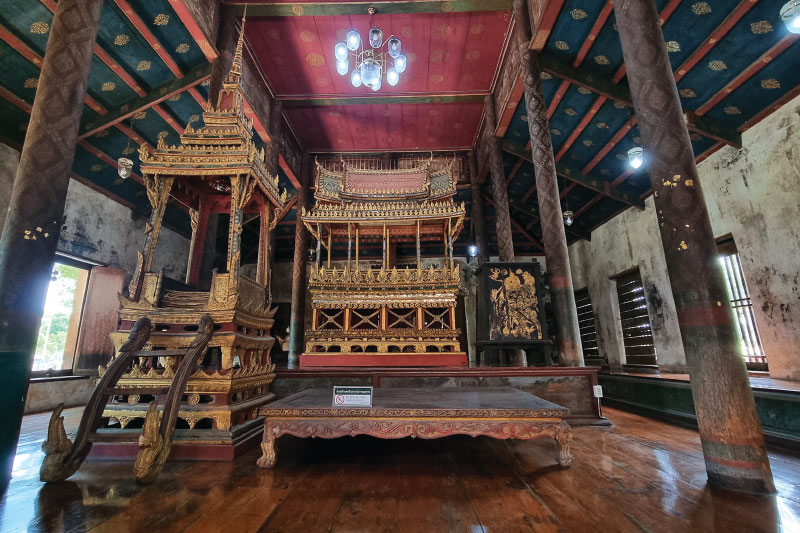
Another sacred attraction on Ayutthaya’s history trail is Wat Choeng Tha, situated beside the Lop Buri River. This temple houses exquisite wooden Thammat (preaching pulpits) that survived the Burmese invasions of the 18th century. Wat Choeng Tha is thought to have been built over 700 years ago during the reign of King U-thong (King Ramathibodi I (reigned 1351-1369), though no records of its founding exist.
According to legend, the temple was built by a wealthy man as a gesture of forgiveness after his daughter eloped to marry the man she loved. His daughter, however, never returned so he decided to transform the newlyweds’ house into Wat Khoi Tha – the Temple of Waiting.
During the reign of King Rama IV (1851-1868), the name was changed to Wat Choeng Tha in reference to the Ayutthaya royal-barge boatyard that stood next to the temple.
Wat Choeng Tha houses two ancient wooden preaching pulpits – a single-seater and a longer one for several monks. The longer one for several monks. The longer pulpit is gilded with gold and topped with a spired roof in the distinctive curved design of the late Ayutthaya era. The two pulpits grace the sermon hall, where murals illustrate the 10 incarnations of the Buddha and the way of life in old Siam.
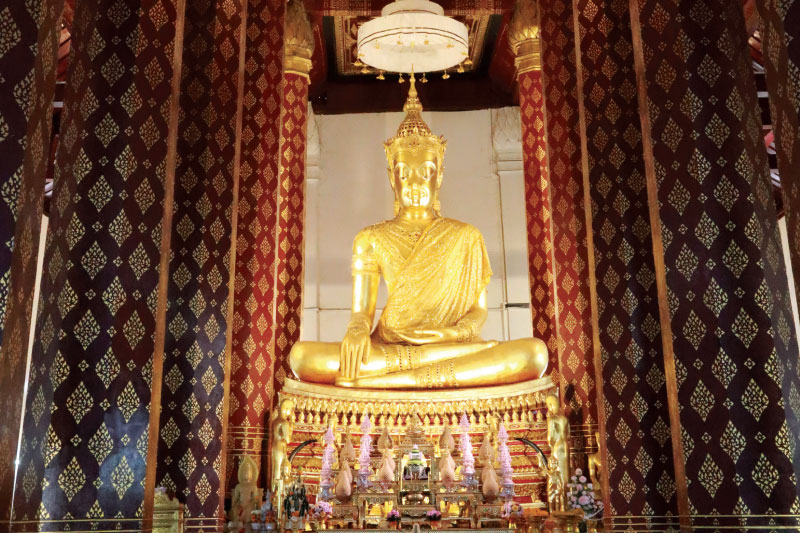
Wat Na Phra Meru is also a must-visit destination, being another rare temple that escaped destruction during the 18th-century Burmese-Siamese wars. Burmese King Alaungpaya deployed his artillery at the temple to attack the Ayutthaya royal palace on the opposite riverbank. But when his cannons misfired, fatally injuring the king, the Burmese forces suddenly withdrew from their siege of Ayutthaya.
The original architecture of the Ayutthaya era was thus preserved at Wat Na Phra Meru. The remarkable centrepiece is the Ubosot (ordination hall), streatching 50 metres by 16 metres and crowned by an elegant three-tiered gable roof. Inside is enshrined the bejewelled-gold Phra Buddha Nimitr Vichit Maramoli Sisanpeth. Spanning 4.4 metres wide and 6 metres high, this is one of the largest seated Buddha images in Thailand.
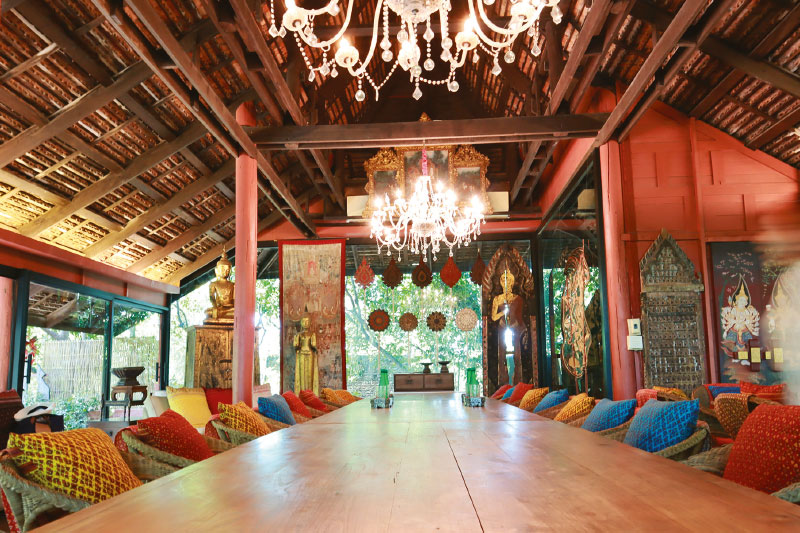
The ideal spot to end a one-day trip to Ayutthaya is at Baan Thai Ayutthaya Khlong Sra Bua, where fine traditional Thai cuisine is served beneath the shade of trees. Husband-and-wife team Chakrit and Supamas Sitisara took 20 years to transform on overgrown plot in Khong Sra Bua district into the restaurant paradise that greets diners today. Traditional Thai houses and salas are dotted around a large lotus pond dappled by the shade of tropical trees. The lush garden also provides the vegetables for the dishes served here.
Baan Thai Ayutthaya Khlong Sra Bua offers a chef’s table in a lavish private setting. The 6 to 9 course menus cost from 2,300 baht to 2,900 baht per person. Among the meticulously prepared dishes are Yum Som-O (pomelo salad), Thot Mun Pla Krai (fried fish cakes), Hor Mok Bai Yor (spicyminced fish steamed in banana leaf) and Gung Mae Nam Phao Nam Pla Waan (grilled river prawns served with sweet fish sauce).
The delicious and beautifully presented food matches the stunning tranquility of this garden setting. The traditional riverside houses of Baan Thai Ayutthaya Khlong Sra Bua were chosen as a location for the hit period TV drama “Bupphesanniwat” (Love Destiny). Savouring the slower pace of life and fantastic food here is the perfect end to any day trip.
